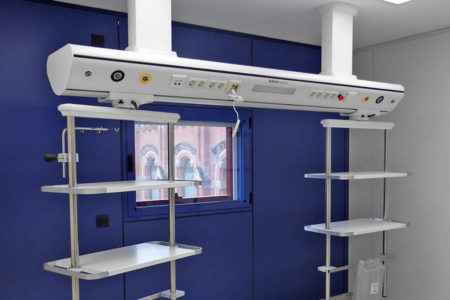Colors have the ability to influence our emotions, mood and behavior. It has been scientifically proven that different colors have psychological and physiological effects on people. Therefore, selecting the right colors in hospital environments can have a significant impact on the experience of patients, medical staff and visitors.
Color psychology and its impact on patients’ mental and emotional health
Color psychology is a field of study that examines how different colors can affect our emotions, moods and behaviors. Colors have the ability to evoke psychological and physiological responses in people, and their proper application in healthcare settings, such as hospitals, can have a significant impact on the mental and emotional health of patients.
The choice of colors in a hospital setting can influence patients’ perception of their experience and their overall well-being. For example, some specific colors that can affect patients’ mental and emotional health are:
- BLUE
Blue is commonly associated with calm, serenity and tranquility. It is a color that can reduce anxiety and stress, and has been used in healthcare areas to create a relaxing environment. It can help stabilize blood pressure and slow the heart rate, which contributes to a relaxed state.
- GREEN
Green is associated with nature and harmony. This color has a calming and cooling effect, and has been used in health care settings to promote healing and wellness. Green is also associated with hope and renewal, which can be comforting to recovering patients.

The importance of color in patient satisfaction and hospital experience
The patient experience in a hospital is not only limited to the medical care they receive, but also encompasses the environment in which they find themselves. Color is a key element that can have a significant impact on patient satisfaction and their overall hospital experience. Let’s look at why color is important in this regard:
1. Welcoming environment: The right colors can help create a welcoming and comfortable environment for patients. Soft, warm tones, such as blues and greens, convey calm and serenity, reducing anxiety and stress. This creates a more pleasant environment conducive to recovery, which in turn contributes to patient satisfaction.
2. Positive stimulation: Vibrant, cheerful colors, such as yellows and oranges, can positively stimulate patients and improve their mood. This is especially important in pediatric areas, where the use of bright colors can help distract and entertain children during their hospital stay. A more positive experience in the hospital environment can contribute to greater patient satisfaction.

Hospital examples
There are several hospitals around the world that have used color effectively in their design, managing to create welcoming and stimulating hospital environments. The following are two outstanding examples:
1. Children’s Hospital of Pittsburgh, USA. This hospital is characterized by its colorful and cheerful design, especially in its pediatric intensive care unit. It uses bright colors, such as yellow, green and blue, in combination with artistic murals and playful elements to create an environment that is attractive and comforting for children.
2. Rigshospitalet Copenhagen Medical Hospital, Denmark. This hospital is recognized for its innovative design that incorporates the strategic use of color. In its pediatric oncology department, soft and soothing colors, such as green and light blue, are used to create a calm and peaceful environment. In addition, warm colors have been used in the waiting areas and treatment rooms to provide a welcoming and comforting environment.
Tedisel Medical and colors
It is essential to create environments that offer options and varieties of colors to suit the needs and preferences of patients. Because of its importance, at Tedisel Medical, we work with a wide variety of options to offer each client the best monochromatic option.
An example is our Ais design headboard that allows customizing the front to give a cozier atmosphere to the area where you want to install it.


© tedisel medical. Hospital Latorre (Soria – España)
In conclusion, colors play a significant role in hospital environments and can have an impact on both the patient experience and the well-being of medical staff. Careful selection of the right colors can create a relaxing, welcoming and stimulating environment, improving the quality of care and promoting a sense of well-being in everyone who visits or works in a hospital.









